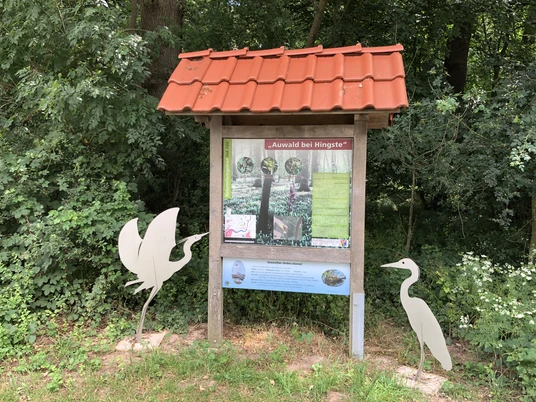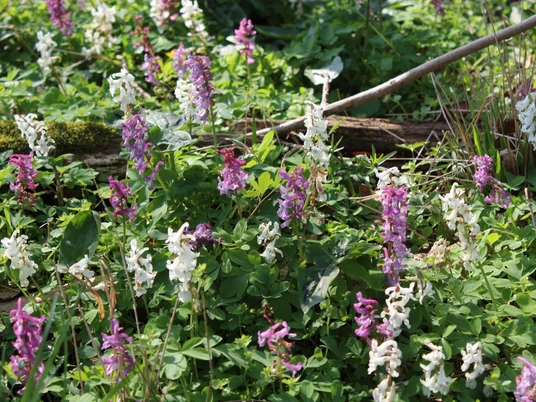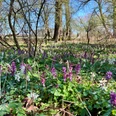Alluvial forests are near-natural forests in the floodplains of streams and rivers that are strongly influenced by flooding and high groundwater levels. Depending on the water regime, soil conditions and altitude, different types of alluvial forest can be distinguished: If the site is flooded frequently or for long periods (100 to 200 days a year), a softwood floodplain develops with various willow species (= softwoods). In the case of shorter or less frequent flooding with low flow velocity, English oak, ash, elm and other hardwood tree species can establish themselves and a hardwood floodplain develops. In sandy floodplains, beech-rich forms can also occur on sites that are rarely or briefly flooded in winter.
The "Hingster Auwald" is an old-growth forest of oaks and beeches. Due to the loamy site, a herbaceous layer has developed in which many plant species such as Gagea lutea, Arum maculatum and Corydalis cava bloom early in the spring before the trees sprout leaves.
The colonization of the higher floodplain areas has largely displaced hardwood riparian forests in Central Europe. The "Hingster Auwald" as a relict of the originally widespread forest type is therefore of nationwide importance.
The aim of the protection in 1993 is to secure the population of animal and plant species in need of protection as well as their biocoenoses and to promote them in individual cases through targeted maintenance and development measures. It is also important to preserve the outstanding beauty and special character of the "Hingster Auwald" with its colorful early flowering aspect in the long term.
All actions that destroy, damage or change the nature reserve or individual parts of it are therefore prohibited. Measures that could have a negative impact on the groundwater level in the riparian forest are prohibited. The nature reserve may only be entered on the marked paths and dogs must be kept on a lead all year round.
The "Hingster Auwald" is an old-growth forest of oaks and beeches. Due to the loamy site, a herbaceous layer has developed in which many plant species such as Gagea lutea, Arum maculatum and Corydalis cava bloom early in the spring before the trees sprout leaves.
The colonization of the higher floodplain areas has largely displaced hardwood riparian forests in Central Europe. The "Hingster Auwald" as a relict of the originally widespread forest type is therefore of nationwide importance.
The aim of the protection in 1993 is to secure the population of animal and plant species in need of protection as well as their biocoenoses and to promote them in individual cases through targeted maintenance and development measures. It is also important to preserve the outstanding beauty and special character of the "Hingster Auwald" with its colorful early flowering aspect in the long term.
All actions that destroy, damage or change the nature reserve or individual parts of it are therefore prohibited. Measures that could have a negative impact on the groundwater level in the riparian forest are prohibited. The nature reserve may only be entered on the marked paths and dogs must be kept on a lead all year round.
Good to know
Author
Mittelweser-Touristik GmbH
Lange Straße 18
31582 Nienburg/Weser
Organization
Mittelweser-Touristik GmbH
License (master data)
Mittelweser-Touristik GmbH
Nearby





